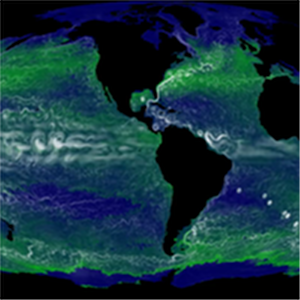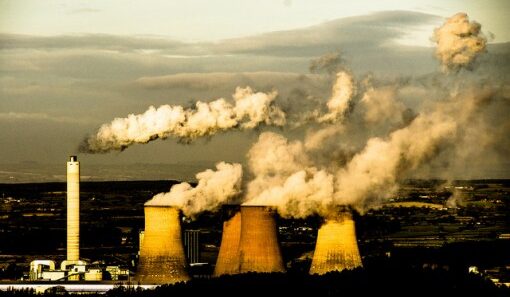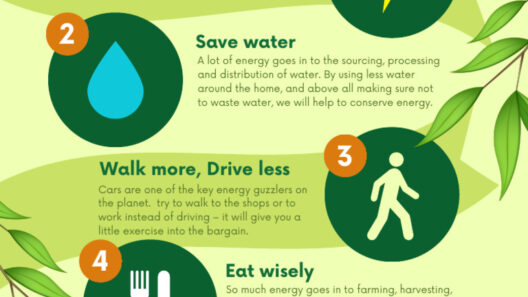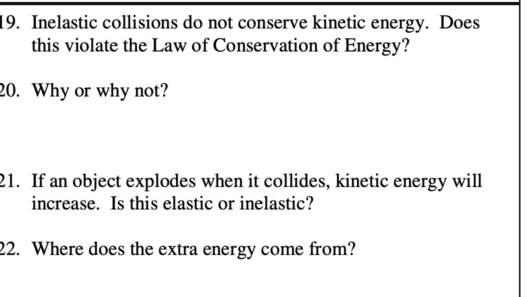The universe operates under a set of predetermined principles that govern everything from the smallest particles to the largest celestial bodies. One of the fundamental principles is the Law of Conservation of Energy, which states that energy cannot be created or destroyed; it can only be transformed from one form to another. This principle holds true across all realms of science, including the intricate dances observed in biological systems. Examining how organisms adhere to this law reveals the fascinating intersection where biology meets physics. It promises a shift in perspective, prompting a deeper understanding of life processes and the energy transformations that underpin them.
In the realm of biology, organisms have evolved to harness energy from their environments in complex ways. From the microscopic to the magnificent, life continually captures and converts energy forms, demonstrating a harmonious compliance with the Law of Conservation of Energy. To dive deeper, one must first appreciate the various sources of energy utilized by organisms, primarily sunlight, chemical compounds, and physical processes.
Photosynthesis serves as one of the most prominent examples of energy transformation within the biological sphere, showcasing the captivating interaction between sunlight and life. Plants, algae, and certain bacteria harness solar energy through a process that converts carbon dioxide and water into glucose and oxygen. This transformation is not only essential for the photosynthetic organisms themselves but also forms the foundation of the entire food web. The sunlight captured by chlorophyll molecules does not vanish; rather, it is stored as chemical energy within glucose molecules. This process epitomizes the law: the energy from the sun is neither created nor destroyed; it is merely transformed into a usable form for the organism and, subsequently, other life forms that consume it.
In the case of heterotrophic organisms—those that cannot produce their own food—the interaction with energy continues to showcase the beauty of conservation. Animals, fungi, and many bacteria obtain energy by consuming organic matter. As these organisms metabolize food, they break down complex organic compounds to release stored energy in a process called cellular respiration. Here, the energy originally captured by plants during photosynthesis is released for the animal’s use, illustrating a direct connection across the biological spectrum. The energy is transformed from one form to another: from potential energy in chemical bonds to kinetic energy supporting movement, growth, and maintenance of homeostasis. This continuous cycle reinforces the idea that energy is a currency shared amongst all living beings.
Interestingly, the transformation does not always equate to high efficiency. Many metabolic processes release energy as heat, underscoring the second law of thermodynamics, which states that energy transformations are never 100% efficient. Organisms have adapted by developing mechanisms to capture and utilize as much energy as possible, yet some energy is invariably lost to the environment as unusable heat. This can be observed in the ecosystem’s trophic levels where only a fraction of energy is transferred from one level to the next, emphasizing the interconnectedness of life and the relentless flow of energy through various forms.
Moreover, energy conservation in ecosystems extends beyond mere individual organisms—entire ecosystems operate as intricate networks of energy flow. Producers, consumers, and decomposers collaboratively engage in a perpetual cycle. Producers convert solar energy into chemical energy; primary consumers eat producers, and secondary consumers eat primary consumers. Decomposers, such as fungi and bacteria, draw energy from dead organic material, returning nutrients and energy back into the soil, fostering growth among producers once again. Each interaction is governed by energy transformation, underscoring the constant adherence to energy conservation principles.
One might ponder the intricacies of this relationship further, particularly in the domain of symbiosis, mutualism, and co-evolution. Here, organisms optimize their energy use through collaboration. Consider the remarkable symbiotic relationship between corals and the algae known as zooxanthellae. The algae, residing within coral tissues, perform photosynthesis, providing the coral with essential organic compounds. In return, corals offer the algae a protective habitat and access to sunlight. This mutualism exemplifies how organisms not only respect the Law of Conservation of Energy but actively enhance energy efficiency through cooperative interactions, piquing curiosity about other symbiotic relationships within diverse ecosystems.
Investigating the microscopic level reveals even more fascinating adaptations that evoke a sense of wonder. Extremophiles, organisms thriving in extreme environments, exemplify how diverse energy sources can be utilized effectively. For instance, some bacteria found in hydrothermal vents assimilate chemical energy from sulfur compounds, converting it into energy for growth without relying on sunlight. Such adaptability broadens our understanding of energy sources in biological systems under varied environmental conditions, showcasing a stunning versatility among life forms.
Furthermore, studying energy transformations invites contemplation of the human impact on these complex systems. As climate change becomes an indomitable force, the balance of energy flows within ecosystems is constantly challenged. Changes in temperature and atmospheric carbon levels impact photosynthetic efficiency, the metabolic rates of organisms, and overall biodiversity. Recognizing the pivotal role of energy conservation in organismal biology fosters a deeper appreciation of current ecological challenges, reinforcing the urgent need for sustainable practices to maintain energy balance within our planet.
In conclusion, the prevailing unity between biology and physics unfurls an intricate panorama of life that operates seamlessly under the Law of Conservation of Energy. Through photosynthesis, respiration, and symbiotic relationships, organisms have mastered the art of energy transformation while adhering to fundamental physical laws. This understanding not only piques curiosity but also highlights the fragility of these systems in the face of environmental pressures. Acknowledging the close-knit bond between life and energy offers a profound opportunity to foster greater respect and stewardship for the biosphere in which we reside, ultimately instilling a resolve for sustainable futures.








